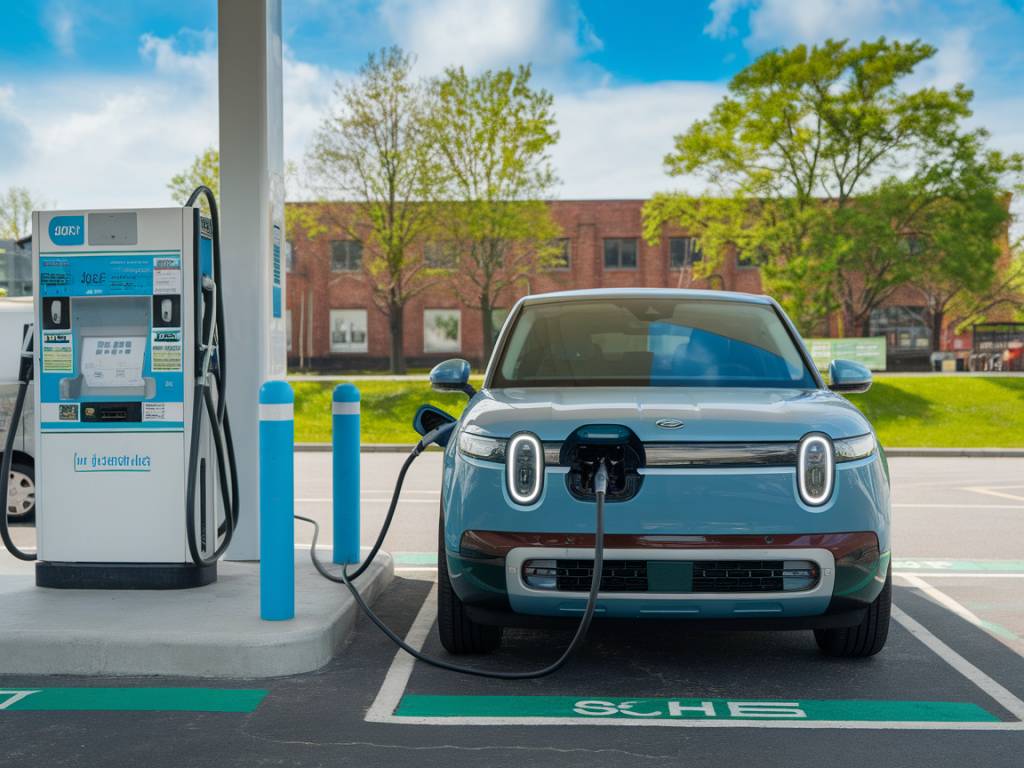In today’s automotive landscape, the push towards greener, more sustainable transportation solutions has never been stronger. As we move further into the age of electric vehicles (EVs), one technology has emerged as a crucial bridge between traditional gasoline-powered cars and fully electric vehicles: the plug-in hybrid electric vehicle (PHEV). In this article, we will explore how plug-in hybrids are effectively bridging the gap between gasoline and full electric, their benefits, challenges, and the role they play in the future of transportation.
Understanding Plug-in Hybrids
Plug-in hybrid electric vehicles (PHEVs) combine the benefits of both traditional combustion engines and electric motors. Unlike standard hybrids, which can’t be plugged in and rely mostly on the internal combustion engine (ICE), PHEVs can be charged through an external power source, allowing them to operate on electric power alone for shorter distances.
This dual capability offers a unique advantage: drivers can rely on electric power for short daily commutes while having the flexibility and range of a conventional gasoline engine for longer trips. This makes PHEVs an attractive option for consumers reluctant to fully commit to the range limitations and charging infrastructure of pure electric vehicles.
Environmental and Economic Benefits
One of the significant advantages of PHEVs is their potential to reduce greenhouse gas emissions and fuel consumption. By enabling short trips on electric power, PHEVs help decrease the reliance on gasoline, thus leading to lower emissions. This is especially beneficial in urban environments where short trips are common, and air quality is often a concern.
Economically, PHEVs can offer cost savings on fuel. Electricity tends to be cheaper than gasoline on a per-mile basis, making daily commutes more affordable. Additionally, some regions offer incentives and rebates for purchasing PHEVs, further reducing the overall cost of ownership.
Flexible Charging Options
One of the distinctive features of PHEVs is their ability to be charged via standard electrical outlets or dedicated EV charging stations. This flexibility makes it easier for consumers to integrate into their daily routines compared to fully electric vehicles which might require more targeted charging infrastructure.
- Level 1 Charging: Uses a standard 120-volt outlet and can fully charge a PHEV battery in around 8-12 hours.
- Level 2 Charging: Requires a 240-volt outlet and can reduce charging time to 2-4 hours, making overnight or workplace charging more feasible.
This ease of charging accessibility makes PHEVs a practical option for a wide range of consumers, from apartment dwellers to homeowners without dedicated home charging stations.
Enhanced Driving Experience
Another compelling aspect of PHEVs is the improved driving experience they offer. The electric motor provides immediate torque, resulting in smoother and quicker acceleration compared to traditional ICE vehicles. The seamless transition between electric and gasoline power enhances the driving experience, making it more enjoyable and efficient.
Moreover, PHEVs often come equipped with regenerative braking systems that capture energy typically lost during braking and use it to recharge the battery. This not only extends the electric range but also contributes to overall fuel efficiency.
Challenges Facing Plug-in Hybrids
Despite their advantages, PHEVs are not without their challenges. One of the main concerns is the added complexity of having both an electric motor and a combustion engine, which can lead to higher initial costs and potentially increased maintenance requirements. The dual powertrain system also means that PHEVs can be heavier than their pure ICE or EV counterparts, potentially impacting handling and efficiency.
Battery size and electric range are other factors to consider. Most PHEVs offer a limited electric-only range, typically between 20-40 miles. While this is sufficient for many daily commutes, it doesn’t match the range offered by fully electric vehicles, which can be off-putting for some consumers.
Moreover, the availability of charging infrastructure can be a barrier. Although PHEVs can use standard outlets, access to faster Level 2 chargers might be limited depending on the region, making efficient charging less convenient for some users.
The Future Role of PHEVs
As the automotive industry continues to evolve, PHEVs are poised to play a significant role in the transition to greener mobility. They offer a practical middle ground for consumers who are not yet ready to commit to fully electric vehicles but still want to reduce their carbon footprint and fuel consumption.
Several automakers are investing in advancing PHEV technology, focusing on improving battery efficiency, increasing electric-only range, and integrating smart charging solutions. These innovations will likely make PHEVs an even more attractive option in the coming years.
Governments and policymakers are also recognizing the value of PHEVs in their efforts to combat climate change. Incentives for PHEVs, alongside investments in charging infrastructure, will likely continue to support their adoption and integration into the broader transportation ecosystem.
Consumer Considerations
For consumers considering a PHEV, several factors should be taken into account:
- Driving Habits: Evaluate daily commute distances and driving patterns to determine if a PHEV’s electric range aligns with most of your trips.
- Charging Accessibility: Assess the availability of charging options at home, work, and other frequent destinations.
- Cost of Ownership: Consider the initial purchase price, potential incentives, and long-term savings on fuel and maintenance.
By weighing these factors, consumers can make informed decisions on whether a PHEV is the right choice for their specific needs and lifestyle.
In conclusion, plug-in hybrids represent a vital step in the ongoing journey towards cleaner, more efficient transportation. By blending the best of both gasoline and electric power, PHEVs offer a balanced and flexible solution for today’s environmentally conscious drivers. As technology and infrastructure continue to improve, PHEVs are set to play a crucial role in the future of the automotive industry, helping to pave the way for a more sustainable and eco-friendly future.

